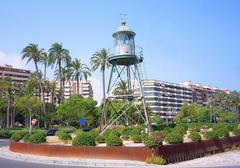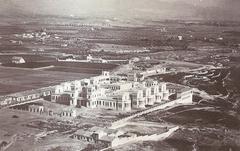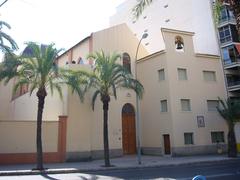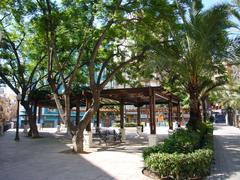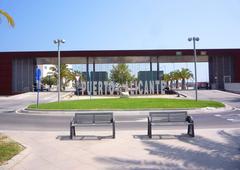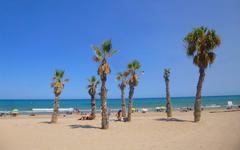Torre Bosch Alicante, Spain: Visiting Hours, Tickets, and Comprehensive Travel Guide
Date: 14/06/2025
Introduction: Torre Bosch – A Defended Jewel of Alicante’s Heritage
Torre Bosch, a striking 16th-century manor tower, stands on the outskirts of Alicante in the prestigious Frank Espinós neighborhood. As part of the historic “Torres de la Huerta” network, it originally served as a defensive stronghold against Mediterranean pirate incursions. Over the centuries, Torre Bosch has transformed from a bastion of security and noble rural residence into a cultural venue and protected heritage site, reflecting the region’s layered history and enduring spirit.
This guide delivers everything you need to know for a rewarding visit: Torre Bosch’s origins and architecture, practical visitor information (hours, tickets, accessibility), highlights of its noble heritage, and tips for exploring Alicante’s broader historical landscape. For real-time updates and cultural programming, consult the official estate website and Alicante tourism resources (castillosricsol.es, torrebosch.es, alicanteturismo.com).
Table of Contents
- The Origins and Construction of Torre Bosch
- Historical Context: 16th-Century Defensive Architecture
- Noble Heritage and Ownership
- Restoration and Modern Adaptation
- Visiting Hours, Tickets, and Practical Information
- Torre Bosch’s Role in Alicante’s Rural and Social History
- Architectural Features and Artistic Elements
- Protection and Heritage Status
- Torre Bosch in Alicante’s Historical Evolution
- Frequently Asked Questions (FAQ)
- Plan Your Visit and Explore More
The Origins and Construction of Torre Bosch
Torre Bosch, or Finca Torre Bosch, is located in the southern San Juan district, bordering Alicante city and near Playa San Juan golf course (castillosricsol.es). Built in the 16th century during an era of frequent Berber pirate raids, the tower exemplifies the “Torres de la Huerta” defensive architecture. Its square plan, reinforced ashlar corners, elevated first-floor entrance, and flat terrace were all designed for surveillance and security. The ground floor historically served as a chapel, while the upper floor provided living quarters and refuge.
As the centerpiece of a growing rural estate, Torre Bosch’s practical design merged with the evolving need for comfort and status among its noble owners.
Historical Context: 16th-Century Defensive Architecture
The 16th century saw the Alicante coastline frequently threatened by Ottoman and North African corsairs. Rural landowners responded by building fortified towers like Torre Bosch, which acted as lookout points and refuges for surrounding communities. These towers used smoke and fire signals to communicate threats between estates and the city (alicanteturismo.com). The “Torres de la Huerta” network shaped the region’s landscape, blending agricultural prosperity with the necessity for defense.
Noble Heritage and Ownership
Torre Bosch’s historical importance is cemented by its connection to notable Alicante families. Commissioned by Don Tomás Caturla in the 16th century, it was restored in the 20th century by Ricardo de las Cuevas Cortés and his wife, Elena Prieto Caturla (castillosricsol.es). The Caturla family coat of arms still adorns the tower, symbolizing its noble lineage. Architectural features, such as patterned beach-stone pavements and a traditional cistern, reflect the estate’s self-sufficiency and noble aspirations.
Restoration and Modern Adaptation
Recent decades have seen careful restoration of Torre Bosch’s exterior, preserving its defensive features and family insignia. Interiors have been sensitively adapted for modern functions—hosting events, cultural gatherings, and guided tours (torrebosch.es). Modern additions, such as elegant salons, a library, and a chapel, blend seamlessly with historical elements, ensuring the estate’s ongoing relevance.
Torre Bosch is now registered as a protected monument, recognized for its cultural and architectural significance (torrebosch.es).
Visiting Hours, Tickets, and Practical Information
Visiting Hours:
- Open Tuesday to Sunday, 10:00 AM – 6:00 PM
- Closed Mondays and public holidays
Tickets:
- General admission: €8 adults, €5 seniors (65+), €3 children (6–12), free for children under 6
- Purchase online (ineventos.es) or at the reception
- Group discounts available
Guided Tours:
- Available upon request; advance booking recommended
Accessibility:
- Gardens and event spaces are wheelchair accessible; tower access is limited due to preservation constraints
- Contact [email protected] for specific needs
Other Visitor Tips:
- Parking available on site
- Reachable by car or local bus; nearest stops within walking distance
- Facilities include restrooms, gardens, and event marquee
- Photography allowed in gardens and designated areas (no flash inside the manor)
Nearby Attractions:
- Playa San Juan beach
- Santa Bárbara Castle
- Alicante Old Town
For up-to-date event listings and visitor details, consult the official site (torrebosch.es).
Torre Bosch’s Role in Alicante’s Rural and Social History
Torre Bosch symbolizes the transformation of Alicante’s rural landscape—from a fortified frontier to a center of agricultural prosperity and, today, a social and cultural venue (castlepedia.org). Its 22,000 square meters of gardens and orchards reflect the region’s Mediterranean traditions. Modern use as a venue for weddings, banquets, and conventions mirrors a regional trend: repurposing historic estates for tourism and cultural engagement (ineventos.es).
Architectural Features and Artistic Elements
Torre Bosch’s square tower, flat terrace, robust masonry, and reinforced corners exemplify 16th-century defensive design (castillosricsol.es). The adjoining manor incorporates decorative beach-stone pavements and the Caturla coat of arms. Recent additions, such as the garden marquee and spacious dining hall, are integrated to respect the estate’s historic aesthetics (torrebosch.es).
Protection and Heritage Status
Officially recognized as a “Bien y Espacio Protegido” (Asset and Protected Space) within Alicante’s heritage registry, Torre Bosch enjoys strict conservation oversight (torrebosch.es). Preservation efforts ensure that any changes are sensitive to its architectural and historical legacy.
Torre Bosch in Alicante’s Historical Evolution
Torre Bosch is a living testament to Alicante’s evolution from a contested Mediterranean borderland to a thriving urban center (alicante.com). Its survival and adaptive reuse highlight the region’s commitment to balancing tradition with contemporary cultural life.
Frequently Asked Questions (FAQ)
Q: What are Torre Bosch’s visiting hours?
A: Tuesday to Sunday, 10:00 AM – 6:00 PM; closed Mondays and public holidays.
Q: Are tickets required?
A: Yes. Tickets are €8 for adults; discounts for children and seniors. Guided tours may require additional booking.
Q: Is the site wheelchair accessible?
A: Gardens and event areas are accessible; the historic tower has limited access.
Q: Can I book guided tours?
A: Yes, online or at the estate. Advance booking is recommended.
Q: What nearby attractions can I visit?
A: Playa San Juan, Santa Bárbara Castle, and Alicante’s Old Town.
Plan Your Visit and Explore More
Enhance your experience by exploring related sites such as Castillo de Santa Bárbara and the historic city center. For interactive maps, guided tours, and updated information, download the Audiala app and follow us on social media.
Summary: Key Information for Torre Bosch Visitors
Torre Bosch is a unique window into Alicante’s past—combining defensive architecture, noble heritage, and vibrant present-day cultural life. Plan your visit during open hours, take advantage of guided tours, and explore the estate’s gardens and historic interiors. For accessibility and event information, consult the estate’s official channels or the Audiala app.

